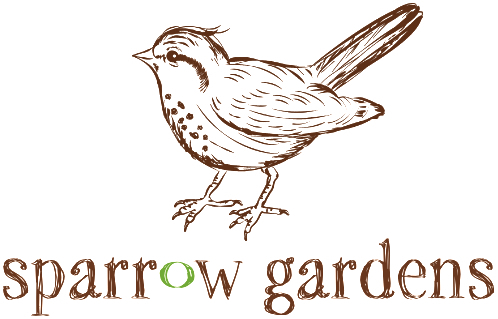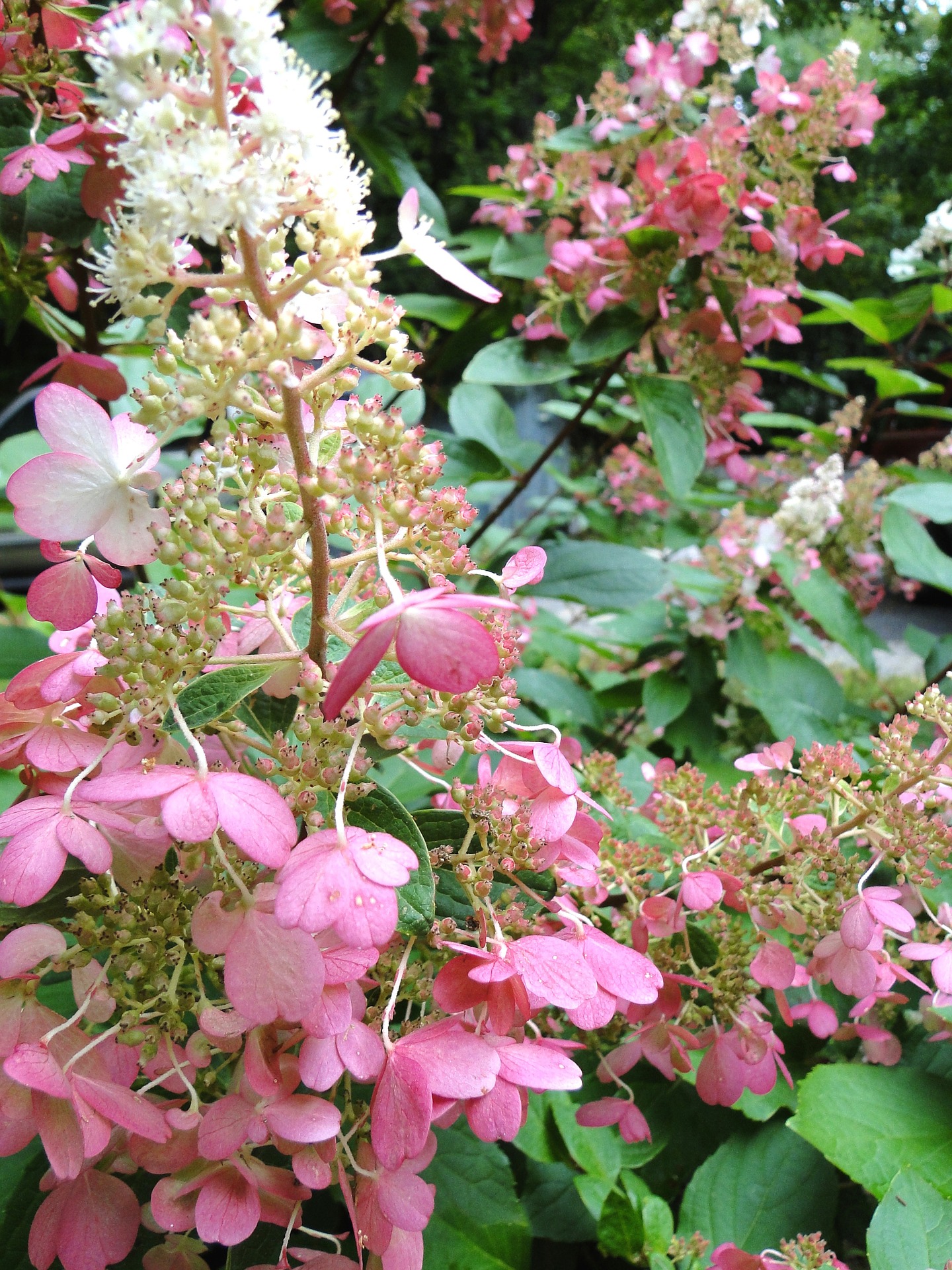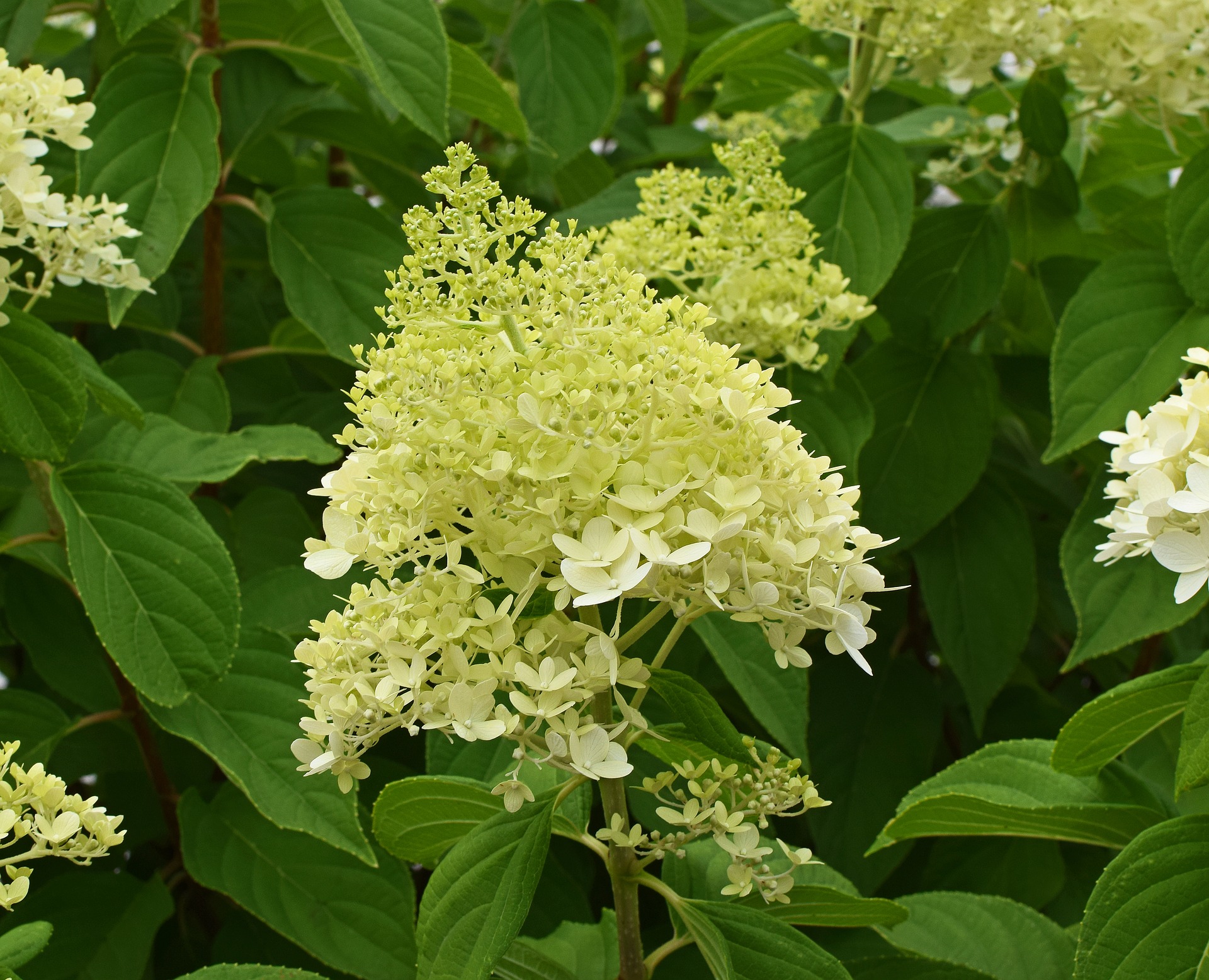hydrangea guide: types, care, misconceptions
hydrangeas
Hydrangeas and summer on Cape Cod are so entwined that you can’t think of one without the other. In the warm days of July the iconic blossoms grace picturesque landscapes across the Cape, bringing color and beautiful form which lasts long into the fall. Hydrangeas are native to a wide range of countries including Japan, China, Indonesia, the Himalayan mountains and the Americas. Most hydrangeas are grown as shrubs, but they can also grow as climbing vines or trees and can live up to 100 years.
types
There are over 80 species and 600 cultivars of hydrangea, which are also commonly called hortensia. Here in North America there are six main types of hydrangea: Bigleaf, Mountain, Panicle, Smooth, Oakleaf and Climbing. The most common of these types are the bigleaf hydrangeas (Hydrangea macrophylla). There are two types of bigleaf: mophead and lacecap. The mopheads are the most popular of the bigleaf hydrangeas, with large flower heads and big, coarsely-toothed leaves. A native of Japan, mopheads include the classic Nikko blue hydrangeas, ‘Endless Summer’ varieties (which bloom on old and new wood), the ‘Citylines’ (a more compact form), and newer ‘Let’s Dance’ and ‘Stargazer’ options.
mophead hydrangea
Lacecap hydrangeas (Hydrangea macrophylla normalis), also native to Japan, are identical to mopheads except for the blooms. The lacecap flowers feature small blossoms in the center which are the fertile flowers surrounded by a halo of larger sterile flowers. Examples include the Endless Summer ‘Twist-n-Shout’ with pink and blue blossoms, 'Let’s Dance' varieties and ‘Abracadabra Star’ in green and white.
lacecap hydrangea with varigated leaves
Mountain hydrangeas were formerly classified as a subspecies of bigleaf hydrangeas (Hydrangea macrophylla var. serrata), but now they are recognized as a type all their own (Hydrangea serrata). A native of Japan, mountain hydrangeas are extremely winter hearty and have blooms which are very similar in form to the lacecap. They are smaller and more delicate in appearance than the bigleaf varieties. In Japan the leaves - which contain a natural sweetener - are used to brew a tea called amacha, leading to the shrub’s common name ‘Tea of Heaven.’ The ‘Tuff Stuff’ line from Proven Winners is a selection of reblooming mountain hydrangea.
'Tuff Stuff' mountain hydrangea
Known for their large elongated (or panicle) flower heads, Panicle hydrangeas (Hydrangea paniculata) are the most winter-hearty of the hydrangea varieties, growing even in zone 3. A native of China and Japan, panicles can tolerate and even prefer more sun than the bigleaf types. The Hydrangea paniculata ‘Grandiflora’ (or Hydrangea p.G., known more commonly as PeeGee hydrangea) is the only hydrangea which can be grown into a standard tree form. Other examples of panicle hydrangeas are the ‘Bobo’ variety, the ‘Limelight’ and the popular ‘Pinky Winky.’
panicle hydrangeas: 'Pinky Winky' on left, 'Limelight' on right
Smooth hydrangeas (Hydrangea aborsecens), originating in the southeastern United States, are one of only two native hydrangeas and have an interesting discovery story. Legend has it that Harriet Kirkpatrick from the town of Anna, Illinois, came upon a smooth hydrangea in bloom in the wild while out horseback riding and transplanted it into her garden. The new form became popular and today these hydrangeas are known as ‘Annabelle’ hydrangeas. Smooth hydrangeas prefer a location with more sun and can get quite considerable in size. The leaves are heart-shaped and the blooms are very large, causing the stems to sag to the ground in some instances. The new ‘Incrediball’ variety has been bred to have stronger stems to thwart some of the drooping. Smooth hydrangeas bloom on new wood and can be cut to the ground in the winter in order to control the size of the shrub. In the minority are aborescens with lacecap-type flowers, several varieties are ‘Haas’ Halo,' ‘Dardom,' ‘Hills of Snow,' ‘White Dome,' and ‘Radiata.’ A new introduction this year is the ‘Invincibelle Wee White’ which is the first compact smooth hydrangea, growing only 1-2.5 feet high and blooming on old and new wood.
smooth hydrangea 'Annabelle'
Oakleaf hydrangeas (Hydrangea quercifolia) get their name from the resemblance their leaves have to those of an oak tree. Oakleafs are more rangy with a looser habit, exfoliating bark, and larger leaves than the other types of hydrangeas and they are also the only hydrangea which changes color in the fall. They prefer a good deal of sun and produce blooms which are similar to the panicle hydrangea except they come in single and double forms.
oakleaf hydrangea
Of the few vining hydrangeas the deciduous climbing variety (Hydrangea petiolaris) is most common in our area. Native to Japan, it can grow up to 60 feet high, attaching itself with suckers to trees or other structures. The large white blooms are very fragrant and similar in form to those of the lacecap. There is an evergreen version of the climbing hydrangea (Hydrangea seemanii) which grows in zones 7-11 and is originally from Mexico. It has similar white flowers to H. petiolaris but retains its dark green glossy foliage all year round and reaches a height of 20-30 feet.
climbing hydrangea (Hydrangea petiolaris) Photo by FactoryTh/iStock / Getty Images
Care
The best results will occur from choosing the correct variety of hydrangea to fit the location. Always determine the level of sun or shade available, with an ideal placement receiving morning sun and afternoon shade. Some types, such as the oakleaf or panicle, can take more sun than others. The space available should also accommodate the hydrangea at its full size as it’s detrimental to constrict a hydrangea through excessive pruning. Hydrangeas should be kept moist but not overly wet, as this will promote root rot. If you’d like to try and change the color of the blooms from pink to blue you can add aluminum sulfate to the soil, this will not have any effect on blossoms which are white however.
Pruning
If ever there was confusion about a subject it is the pruning of hydrangeas. As a rule, all dead canes can and should be removed each year in the spring. In addition, on established plants 1/3 of the older canes can be removed to promote new growth. Then each cane can be pruned down from the top to the first bud and any remaining old blooms can be pruned off. After that, there are two avenues of care depending on whether your hydrangea blooms on ‘old wood’ or ‘new wood.’ Old wood are canes from the previous season and mopheads, lacecaps, and oakleaf bloom on these canes. These types set their blooms in August for the following year so you want to avoid pruning them except for removing dead branches and thinning stems from the end of July until they bloom the next summer. Throw all that out the window for the Endless Summer varieties, however, since they bloom on both old and new wood and can be pruned anytime. Smooth and panicle hydrangeas bloom on new wood and can also be pruned anytime. That said, there are times when hydrangeas need to be pruned for size outside of the ideal pruning window and this will reduce the number of blooms for the current season but the plant will recover the following summer. Of course, you can also take blooms for your vases inside, just make sure to take shorter stems after the end of July!
Not Blooming
“Why aren’t my hydrangeas blooming?” is a question we hear quite often. The cause can be due to a number of factors, such as not enough sun, poor soil, over-pruning, or harsh winter weather. The last reason has been a large factor in the performance of hydrangeas here on the Cape. We’ve had several winters recently with very cold weather, or worse, with warm weather for most of the winter and then a very cold snap in early spring such as the winter of 2015-16. Following this winter many hydrangeas had died back to the ground and those that didn’t lost many leaf and flower buds to the frost. In the aftermath many chose to replace their bigleaf hydrangeas with smooth or panicle varieties that bloom on new wood and are not affected by winter temperature swings.
'antiqued' hydrangea bloom
Antiquing
“Antiqued” hydrangea blooms are those that have been left on the shrub into the fall, when the cool temperatures produce a beautiful marbled effect and harden-off the blossoms so they can be dried and retain their colors indoors. A blossom that is ready to be taken inside is one that feels more leathery to the touch, not soft and pliable. At this stage the bloom can be cut and taken inside, put in a vase of water for one week, and then removed and left to dry out naturally so you can enjoy the beauty of hydrangeas all year long!
Cape Cod Hydrangea Society https://www.thecapecodhydrangeasociety.org
Cape Cod Hydrangea Festival https://www.capecodchamber.org/hydrangea-fest-info









